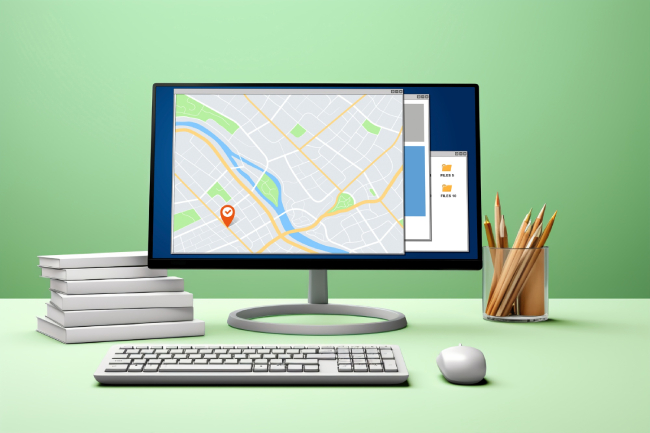Local SEO (Search Engine Optimization) is crucial for New York pizza restaurants to attract nearby customers who are looking for a great slice or a full dining experience. For businesses like pizza restaurants, especially in a competitive market like New York, local SEO helps ensure that your establishment shows up when people search for relevant terms like “best pizza near me” or “New York pizza restaurant.” Below is a detailed guide to optimizing a pizza restaurant’s online presence for local SEO.
1. Optimize Google Business Profile (GBP)
Your Google Business Profile is the first point of contact for many local searchers. Ensuring this profile is optimized and kept up-to-date is essential.

Key Steps:
- Claim and Verify Your Business: If you haven’t already, claim your business on Google My Business.
- Ensure Accurate NAP Information: NAP stands for Name, Address, and Phone number. Ensure your restaurant’s name, address, phone number, and business hours are consistent across your GBP and all online platforms.
- Categories: Choose the correct categories for your business. For example, “Pizza Restaurant” should be the primary category, and you can add secondary categories like “Italian Restaurant” or “Takeout Restaurant” if applicable.
- Use Keywords in Description: Write a compelling business description that includes local keywords like “best pizza in Brooklyn” or “Harlem wood-fired pizza.”
- Add Photos & Videos: High-quality images of your restaurant, pizza, and atmosphere can encourage more engagement. Google also favors profiles that have visuals. Videos showing behind-the-scenes pizza making or customer experiences can be impactful.
- Enable and Respond to Reviews: Encourage customers to leave reviews and make sure to respond to both positive and negative reviews politely and professionally. This interaction can build credibility.
2. Optimize Your Website for Local Keywords
Your restaurant’s website is a key component of your local SEO strategy. Make sure it is optimized for local searches by focusing on local keywords and user experience.

Key Steps:
- On-Page SEO for Location-Based Keywords:
- Use phrases like “Best Pizza in New York,” “Pizza in Harlem,” or “Brooklyn Pizza Delivery” in your meta titles, headings (H1, H2), and body text.
- Incorporate local landmarks or neighborhood names into your content. For example, “Enjoy our authentic Italian pizza just a few blocks from Central Park in Manhattan.”
- Create Location-Specific Pages: If your pizza restaurant has multiple locations (e.g., Brooklyn and Harlem), create dedicated landing pages for each. Use keywords that are specific to those neighborhoods.
- Mobile Optimization: Ensure your website is mobile-friendly. Most local searches for restaurants are made on mobile devices, so a fast, responsive mobile site is critical.
- NAP Consistency: Your restaurant’s Name, Address, and Phone number should be easily visible on every page of your website (often in the footer) and match the details in your Google Business Profile.
3. Local Content Creation
Creating hyper-local content can set your restaurant apart from competitors. Not only does it appeal to search engines, but it also engages your audience by showing you’re part of the local community.

Key Steps:
- Blogging About Local Events: Write about local events or community gatherings in your area. For example, if your Brooklyn pizza shop is sponsoring a local sports team or event, create a blog post that talks about it.
- Recipes or Pizza-Making Tips: Share content that educates your audience, like recipes for pizza dough or tips for making a perfect pizza at home. Include local terms to attract nearby audiences.
- Collaborations and Local Influencers: Feature local influencers or collaborate with other neighborhood businesses. For example, partnering with a nearby brewery or dessert shop for a special promotion can lead to cross-promotion opportunities.
4. Local Backlinks and Citations
Acquiring backlinks from other local businesses and sites can boost your authority in Google’s eyes and improve local rankings.

Key Steps:
- Partner with Local Publications: Reach out to local food bloggers, city guides, or lifestyle websites that might write about the best pizza spots in town. Being featured on these can earn you valuable backlinks.
- List Your Restaurant on Local Directories: Submit your restaurant to local business directories, such as Yelp, TripAdvisor, Zomato, and YellowPages. Ensure your business information is consistent across all these platforms.
- Engage in Community Events: Sponsor local events or host charity fundraisers. Event organizers might list your business on their site and provide a backlink to your website.
5. Online Reviews and Reputation Management
Reviews are critical for local SEO. Not only do they influence potential customers, but they also affect search engine rankings.

Key Steps:
- Encourage Customers to Leave Reviews: Ask satisfied customers to leave a review on Google or Yelp. You can include a QR code on receipts that links directly to your review page.
- Respond to Reviews: Whether reviews are positive or negative, respond to them. This shows that you value customer feedback and can also mitigate damage from any negative reviews.
- Review Generation Tools: Consider using automated tools like BrightLocal or BirdEye to request and manage reviews across platforms.
6. Local Schema Markup
Schema markup (structured data) helps search engines better understand your website content, which can improve local search visibility.

Key Steps:
- Implement Local Business Schema: Use schema markup for local businesses, which provides search engines with specific information about your restaurant, such as your name, address, phone number, hours, and type of cuisine.
- Menu Schema: If you have a menu on your website, use Menu schema to make it easier for search engines to display relevant details in search results.
7. Optimize for Voice Search
Voice search is becoming increasingly popular, especially for local queries like “best pizza near me.” Optimizing for voice search can give you an edge over competitors.

Key Steps:
- Use Natural Language in Content: When optimizing for voice search, use conversational phrases like “Where can I find the best pizza in Brooklyn?” or “What are the best pizza places near Harlem?”
- Focus on Long-Tail Keywords: Since voice search queries are often longer, include long-tail keywords that reflect how people speak, such as “best family-friendly pizza restaurant in New York.”
8. Monitor Analytics and SEO Performance
Tracking your local SEO performance helps you understand what’s working and where there’s room for improvement.

Key Steps:
- Google Analytics and Search Console: Set up Google Analytics to track website traffic, and use Google Search Console to monitor your performance in local search results.
- Local SEO Tools: Use tools like Moz Local, BrightLocal, or SEMrush to track your local rankings, citations, and reviews. This helps ensure your pizza restaurant is visible when people search for nearby options.
Conclusion
For New York pizza restaurants, local SEO is a vital tool for attracting nearby customers and standing out in a competitive market. By optimizing your Google Business Profile, ensuring your website is fully optimized for local searches, creating local content, and actively managing reviews, you can build a strong local online presence that drives both foot traffic and online orders.

